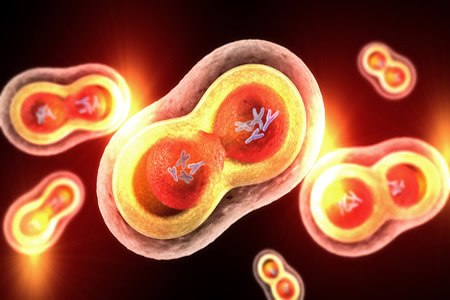In 2006, researchers in Japan discovered skin cells could be reprogrammed into Induced Pluripotent Stem Cells (IPSCs). The Japanese researchers’ skin-cell generated IPSCs could form fetal cell types, but they were not capable of forming extra-embryonic tissues.
Recently, researchers from Hebrew University of Jerusalem have gone a step further and have transformed mouse skin cells into the three types of cells found in early embryos – The cell types that form the embryo, the placenta, and extra-embryonic tissues such as the umbilical cord.
The research suggests it may be possible to create viable human embryos without the need for eggs or sperm. While it could be possible to grow embryos in the lab for implantation to resolve infertility problems, the findings are particularly exciting for research. Embryos engineered from skin cells could be used to model placental dysfunctions and embryonic defects.
The research team was headed by Dr. Yossi Buganim and Dr. Oren Ram from the HU Institute of Life Sciences and Professor Tommy Kaplan from the HU School of Computer Science. The team identified five pluripotency genes that could be inserted into skin cells and could differentiate the cells into the three different embryonic cell types.
After studying the genomic changes inside cells after the introduction of the five genes, the researchers were able to isolate the functions of each and the role each played in pluripotency and cell differentiation.
The process of reprogramming the skin cells to lose their identity and adopt the new identity of one of the three different embryonic stem cell types took around a month. Two of the five genes were responsible for the loss of cellular identity and reprogramming them into one of the three different types of embryonic stem cells.
One gene – named Esrrb – pushed the skin cells down the extra-embryonic stem cell development path and a gene called Eomes was responsible for guiding the cells down the placental development path.
“Mechanistically, we show that the interplay between Esrrb and Eomes during the reprogramming process determines cell fate, where high levels of Esrrb induce a XEN-like state that drives pluripotency and high levels of Eomes drive trophectodermal fate,” explained the researchers.
This is not the first time researchers have tried to create a viable embryo without the use of sperm or eggs, but the study is the first to show that skin cells can be reprogrammed into the three different embryonic cell types necessary for the development of a viable embryo. Previous research has required cells to be harvested from growing embryos. The HU researchers’ technique does not require the sacrifice of an embryo to harvest cells, which gets around some of the ethical concerns that surround the creation of test-tube embryos in the lab.
The study – Direct Induction of the Three Pre-implantation Blastocyst Cell Types from Fibroblasts – was recently published in the journal Cell Stem Cell. DOI: 10/1016/j.stem.2019.03.018
